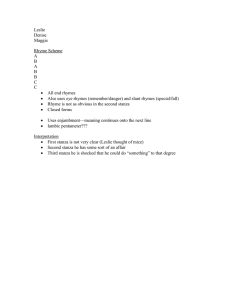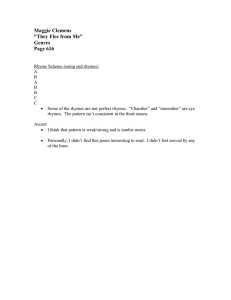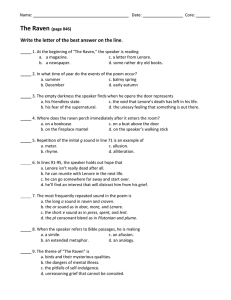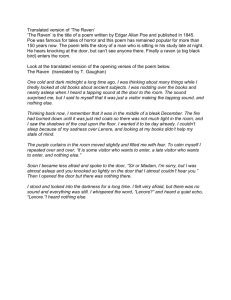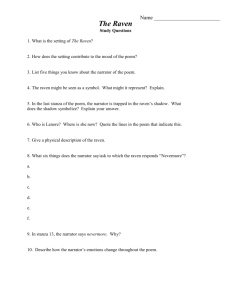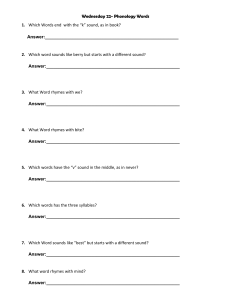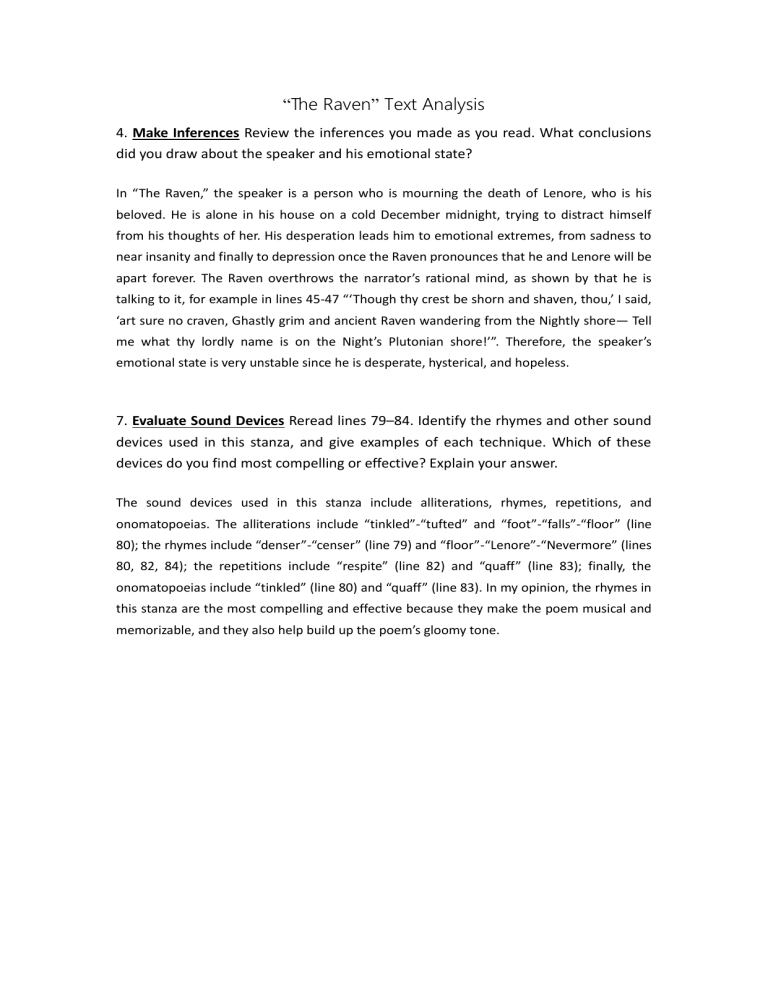
“The Raven” Text Analysis 4. Make Inferences Review the inferences you made as you read. What conclusions did you draw about the speaker and his emotional state? In “The Raven,” the speaker is a person who is mourning the death of Lenore, who is his beloved. He is alone in his house on a cold December midnight, trying to distract himself from his thoughts of her. His desperation leads him to emotional extremes, from sadness to near insanity and finally to depression once the Raven pronounces that he and Lenore will be apart forever. The Raven overthrows the narrator’s rational mind, as shown by that he is talking to it, for example in lines 45-47 “‘Though thy crest be shorn and shaven, thou,’ I said, ‘art sure no craven, Ghastly grim and ancient Raven wandering from the Nightly shore— Tell me what thy lordly name is on the Night’s Plutonian shore!’”. Therefore, the speaker’s emotional state is very unstable since he is desperate, hysterical, and hopeless. 7. Evaluate Sound Devices Reread lines 79–84. Identify the rhymes and other sound devices used in this stanza, and give examples of each technique. Which of these devices do you find most compelling or effective? Explain your answer. The sound devices used in this stanza include alliterations, rhymes, repetitions, and onomatopoeias. The alliterations include “tinkled”-“tufted” and “foot”-“falls”-“floor” (line 80); the rhymes include “denser”-“censer” (line 79) and “floor”-“Lenore”-“Nevermore” (lines 80, 82, 84); the repetitions include “respite” (line 82) and “quaff” (line 83); finally, the onomatopoeias include “tinkled” (line 80) and “quaff” (line 83). In my opinion, the rhymes in this stanza are the most compelling and effective because they make the poem musical and memorizable, and they also help build up the poem’s gloomy tone.

